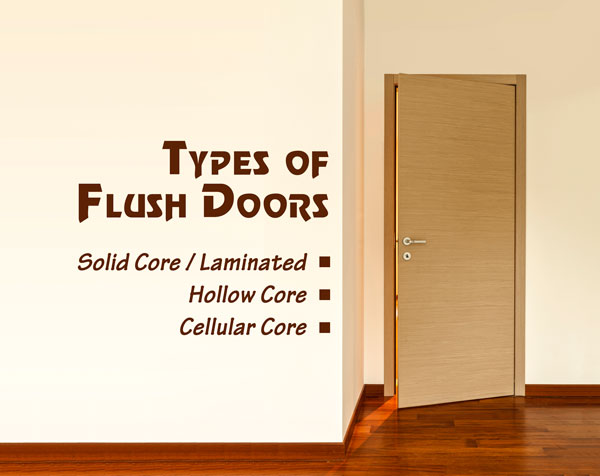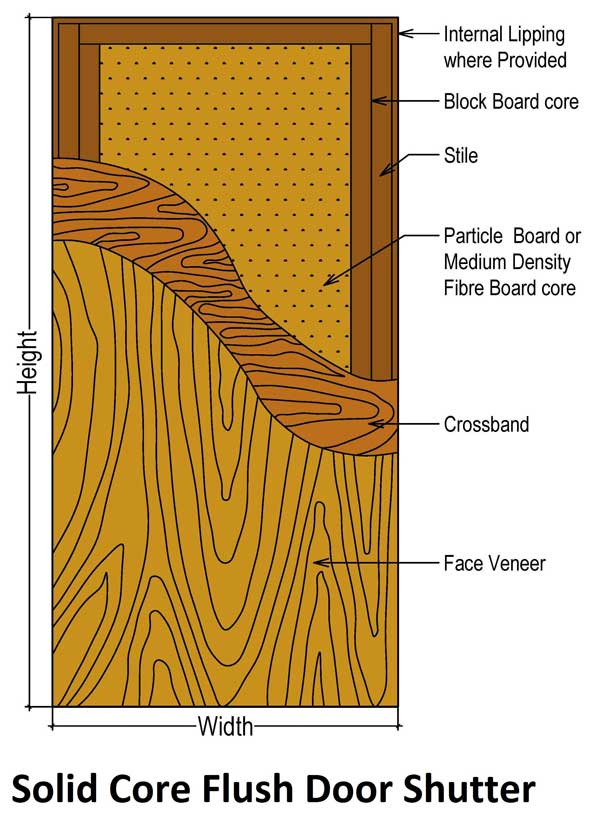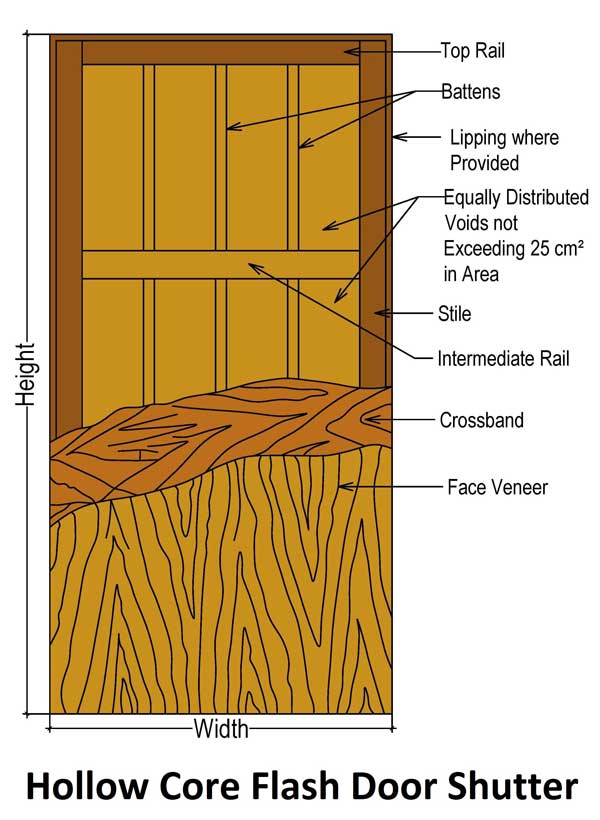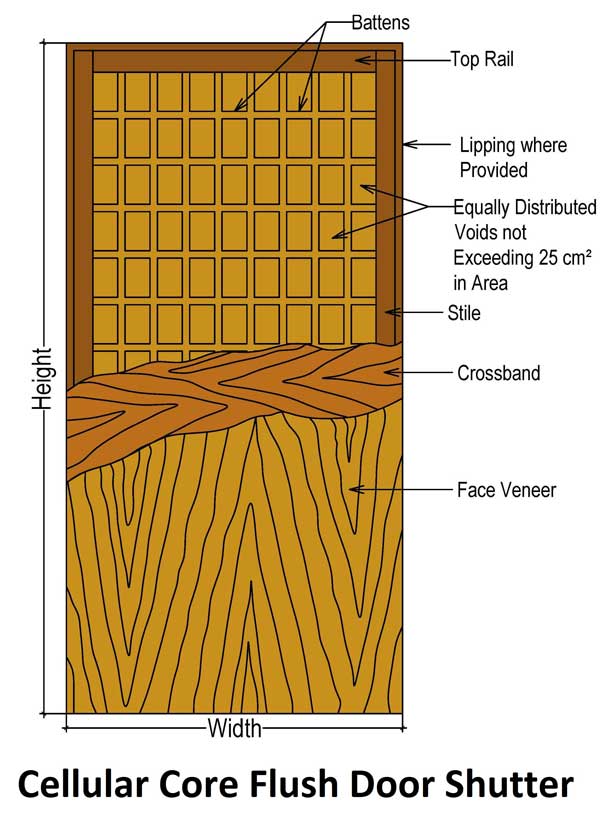The door is the most essential part of the house after the roof and window. It provides safety and privacy to the occupants. It provides an entry or exit to the inside or outside of a house or rooms of a house.
There are different types of doors used in construction of house. Different types of doors have different properties, uses and are made of different materials. Flush door is a simple interior or exterior door that have plain facings on both sides of the construction. It is covered on each side by sheets of plywood, veneer or laminate.
Types of Flush Door

Mainly, there are three types of flush doors:
01. Solid Core Flush Doors or Laminated Flush Doors

This is the most popular types of flush doors. These doors are also known as laminated flush doors. As the name suggests, solid core flush doors have solid blocks of wood inside. Solid core doors are strong and have better sound proofing properties.
The laminated flush doors consist of stiles, top and bottom rails each not less than 7.5cm wide. Solid core doors are made from combination of blockboard/ Particle Board/Medium Density Fibreboard (MDF) /Laminated Core, cross band, face veneer, etc.
Plywood sheet are glued under pressure to the assembly of core fixed in the frame on the both faces. Instead of plywood sheets, separate cross bands and face veneers are also used. The frame is made out of selected pieces of timber, but where it is not possible to use same species of timber frame, it is necessary to provide hard wood lipping around the frame to achieve required strength and durability. The width of the lipping should be equal to the thickness of the core and its depth should not less than 25mm.
When cross bands and face veneers are glued separately, the cross band are laid at right angles to the core and glued on its both faces. Face veneers are thereafter laid at right angles to the cross bands and are glued to the cross bands. The thickness of the plywood or the combined thickness of cross band and face veneers should not be less than 3mm.
These doors are quite strong but they are heavy and require more material. It is used as exterior doors because they provide better strength and sound insulation. The solid core doors are more expensive than cellular core door.
02. Hollow Core Flush Doors

Hollow core doors are hollow inside with only a supporting honeycomb structure. In hollow core type flush door, frame consists of stiles, top, bottom and intermediate rails, which are not less than 7.5 cm in width. The space between the stiles and the rails is divided by fixing wooden battens. In hollow core shutter, vertical battens are not less than 25 mm wide. These battens are fixed on the rails that they provide void spaces.
Plywood sheets or combination of cross bands and face veneers are then glued under pressure on the both faces of the core. Thickness of plywood should not be less than 6 mm. They are light in weight but not as strong as solid core door.
03. Cellular Core Flush Doors
A cellular core flush door frame consists of stiles, top rail and bottom rail. These rails are not less than 7.5cm in width.

The cellular core is formed by fixing wooden or plywood battens. These battens are not less than 25 mm in width and are uniformly distributed with the voids and these voids do not exceed 25 cm2 in area.
The door shutter is formed by gluing, under pressure, plywood sheets or cross bands and face veneers on the both faces of core. The thickness of the plywood should not be less than 3mm. This is stronger than hollow core but not as strong as solid core.
Flush door therefore is the most economical choice because of its appearance, and durability. Knowing the types of flush doors available can help you make a right choice for doors for your home.



